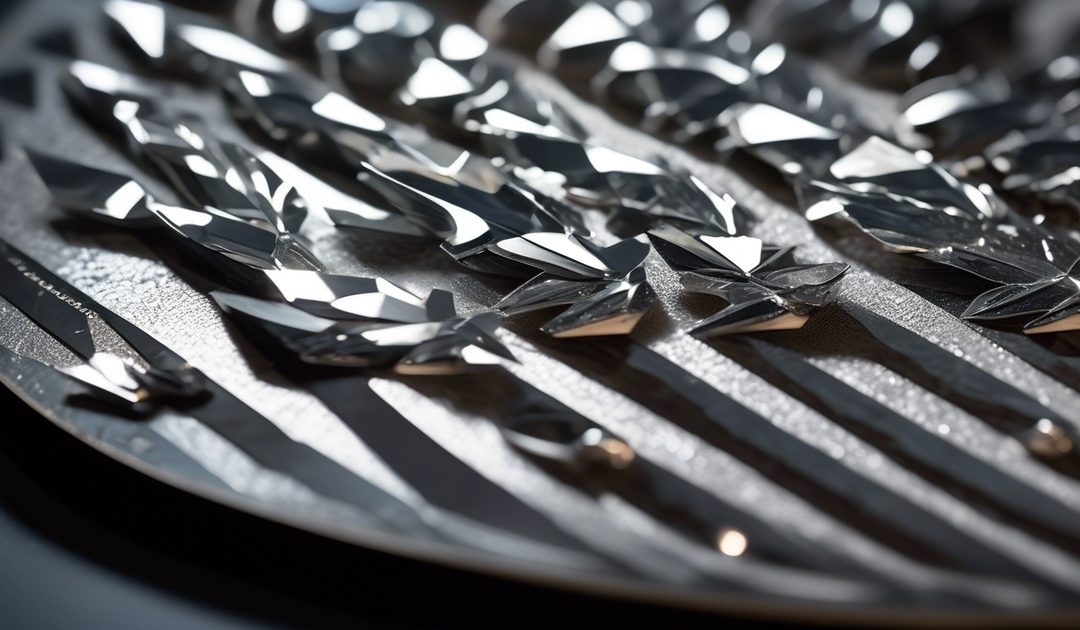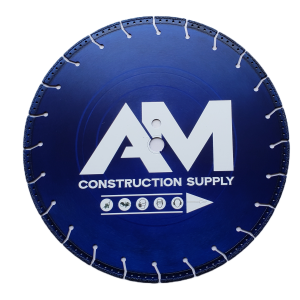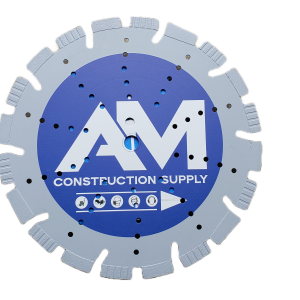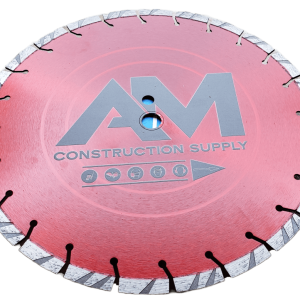Choosing the right saw blade can significantly impact the outcome of your cutting projects.Understanding their features and applications is crucial. In this post, we will delve into the characteristics of both carbide and diamond blades, exploring their respective strengths and weaknesses. By examining factors such as durability, cost-effectiveness, versatility, and performance in different materials, including drill bits, diamond tools, and carbide teeth, you’ll gain valuable insights into which type of blade may be better suited for your specific cutting needs.
Carbide blades are known for their robustness in handling tough materials like wood and metal, whereas diamond blades excel in precision cutting of hard substances such as concrete and stone. Understanding these distinctions, including drilling and drill bits, will empower you to make an informed choice based on the demands of your projects.
Key Takeaways
- Consider the specific application and material to be cut when choosing between carbide and diamond blades.
- Prioritize diamond blades for cutting hard materials like concrete, stone, and masonry, while carbide blades are suitable for softer materials like wood and plastic.
- Evaluate the long-term cost implications and durability of the blade based on the frequency of use and the material being cut.
- Regularly inspect and maintain blades to ensure optimal performance and prioritize safety measures during usage.
- Industry insights can provide valuable guidance in selecting the most appropriate blade for specific professional or DIY projects.
- Understanding the differences and applications of carbide and diamond blades is crucial for achieving efficient and precise cutting results.
Blade Basics
Materials Overview
It’s essential to consider factors like durability, precision, and the type of material being cut. For example, carbide blades and diamond tools are known for their durability and ability to cut through tough materials like metal and wood. On the other hand, diamond blades are ideal for cutting through hard materials such as concrete and stone due to their exceptional hardness.
The significance of bi-metal blade materials in various cutting tasks cannot be overstated. For instance, when working with ceramics or glass tiles, a diamond blade’s hardness ensures clean cuts without chipping or cracking the material. Conversely, in woodworking projects that involve cutting dense hardwoods or abrasive composite materials, a carbide-tipped blade offers longevity and precision.
Blade Anatomy
Understanding the different components that make up a cutting blade is crucial in determining its performance. The design and structure of a blade play a significant role in ensuring efficient cutting operations. Components such as the tooth configuration (for circular saw blades) or segment design (for diamond blades) directly impact how effectively they cut through specific materials.
In addition to this, each part of the blade has a unique role in ensuring efficient cutting performance. For example, on a circular saw blade designed for ripping wood along its grain direction, the gullets between teeth help remove chips from the kerf while preventing heat buildup during prolonged use.
Cutting Technologies
Advancements in cutting technologies have significantly improved blade performance over time. These innovations have led to enhanced durability, precision cuts, and increased efficiency across various applications where carbide or diamond blades are used. For example, the development of bi-metal technology has resulted in multi-purpose blades capable of efficiently handling both wood and metal-cutting tasks.
Cutting technologies also play an integral role in influencing one’s choice between carbide and diamond blades based on specific requirements. While diamond blades excel at making precise cuts on hard surfaces due to their hardness properties, carbide-tipped blades offer versatility by providing effective results across different types of softer materials such as plastics or non-ferrous metals.
Diamond Blades Explained
Synthesis Process
Diamond blades are made using a synthetic process that involves creating artificial diamonds. These diamonds are produced under high pressure and temperature, mimicking the natural conditions that form real diamonds. On the other hand, carbide blades are manufactured by combining tungsten or titanium with carbon to create a hard composite material.
The synthesis process for diamond and carbide blades differs significantly. While diamond blades involve creating actual diamond crystals, carbide blades rely on mixing metals and carbon to produce a hard compound. This dissimilarity in production methods results in distinct characteristics and cutting capabilities for each type of blade.
Diamond Segments
Diamond segments play a crucial role in the performance of cutting blades. These segments consist of small pieces of industrial-grade diamonds embedded in the blade’s metal matrix. The use of diamond segments offers exceptional hardness and wear resistance, making them highly effective for cutting through tough materials like concrete, asphalt, and stone.
In applications where extreme durability is required, such as construction projects involving reinforced concrete or granite fabrication, diamond segments shine due to their ability to withstand heavy loads without losing their sharpness. Their remarkable hardness ensures prolonged usage before needing replacement compared to conventional blade materials.
Cutting Efficiency
Diamond blades outperform carbide ones across various materials such as concrete, masonry, ceramics, glass tiles, and natural stones. Factors influencing this efficiency include the hardness of the material being cut and the speed at which it needs to be done.
For instance:
- In construction sites where precise cuts on dense materials like reinforced concrete are essential for structural integrity,
- Carbide-tipped saws may struggle due to their lower hardness compared to diamond tools.
- Conversely,
- When fast cuts through softer materials like wood or plastic are required,
- Carbide saws might offer better efficiency due to their toughness combined with sharp edges suited for such tasks.
Carbide Blades Unveiled
Tungsten Carbide
Tungsten carbide is a strong and durable material commonly used in cutting blades. Its toughness and hardness make it ideal for various applications, including woodworking, metalworking, and construction. The advantage of tungsten carbide lies in its ability to maintain sharpness over extended periods, ensuring consistent cutting performance. For example, in woodworking, tungsten carbide blades are preferred for cutting hardwoods like oak or maple due to their exceptional durability.
Carbide blades with tungsten segments are known for their resistance to wear and tear. The composition of these segments typically includes a combination of tungsten and cobalt, resulting in enhanced strength and longevity. These segments play a crucial role in the overall performance of the blade by maintaining sharpness even when subjected to high-stress cutting operations. Industries such as manufacturing and engineering rely on carbide segment blades for precision cutting of tough materials like stainless steel or titanium.
Carbide Segments
The structure of carbide segments significantly contributes to the effectiveness of cutting blades. By embedding small pieces of tungsten carbide within the blade’s design, manufacturers ensure superior strength and resilience against abrasive materials. This strategic placement enhances the blade’s ability to withstand heavy usage without losing its sharp edge. In comparison to diamond blades, those featuring carbide segments excel when used for tasks involving dense materials such as concrete or asphalt.
Industries that frequently encounter demanding cutting requirements often turn to carbide segment blades due to their exceptional durability under challenging conditions. For instance, construction companies utilize these blades during roadworks where they need reliable tools capable of consistently delivering precise cuts through tough surfaces like cured concrete or reinforced asphalt.
Durability Factors
When evaluating durability factors, it becomes evident that both carbides’ diamond has distinct advantages based on specific applications.
- Carbides: Known for their robustness under high-stress conditions
- Diamonds: Renowned for their unmatched hardness suitable for extremely abrasive materials
Comparing these two types reveals that while diamond excels at slicing through hard substances such as granite or porcelain tiles with ease due to its unparalleled hardness factor;
Performance Comparison
Hardness and Wear
Carbide blades are known for their hardness and wear resistance. They are measured on the Rockwell scale, with higher numbers indicating greater hardness. Diamond blades, on the other hand, boast an even higher level of hardness due to their composition of industrial diamonds. This exceptional hardness makes diamond blades highly resistant to wear during cutting operations.
In the industry, a common standard for measuring blade hardness is the Mohs scale for mineral hardness. This scale ranges from 1 (softest) to 10 (hardest), providing a reliable way to quantify the relative hardness of different materials used in cutting tools. The correlation between hardness, wear, and overall blade lifespan is crucial; harder materials tend to exhibit superior wear resistance and have longer lifespans compared to softer ones.
Cutting Speed
It’s important to consider that different materials and applications may require varying speeds. Carbide blades excel in cutting through tough materials like metal or wood at high speeds while maintaining precision. Conversely, diamond blades offer unparalleled speed when working with extremely hard substances such as concrete or ceramic tiles.
Optimizing cutting speed involves adjusting parameters such as feed rate and spindle speed based on the material being cut and the type of blade being utilized. For instance, when using a carbide blade on metal, increasing the spindle speed can enhance efficiency without compromising precision. Similarly, employing a diamond blade at optimal speed ensures swift cuts through hard surfaces without causing excessive heat buildup.
Blade Longevity
The longevity of both carbide and diamond blades is influenced by various factors including material composition, operating conditions, maintenance practices, and frequency of use. In real-world scenarios where extended blade longevity is crucial—such as construction projects or manufacturing facilities—diamond blades prove indispensable due to their ability to withstand prolonged usage without significant degradation in performance.
Implementing effective maintenance practices can significantly prolong the lifespan of cutting blades regardless of their composition. Regular inspection for signs of damage or wear allows for timely replacements or repairs before issues escalate further.
Application Specifics
Material Suitability
Carbide blades are best suited for cutting harder materials such as metal, wood, and plastic due to their durability and resistance. On the other hand, diamond blades excel in cutting softer materials like asphalt, ceramic tiles, and concrete because of their exceptional hardness. For instance, a construction company would use a diamond blade for precise cuts when working on a concrete driveway or sidewalk. In contrast, a furniture maker might opt for a carbide blade to cut through hardwood for crafting custom pieces.
Both are capable of achieving high levels of accuracy. Industries such as woodworking and metal fabrication rely on carbide blades to make intricate cuts with smooth edges. Conversely, industries like construction and masonry depend on diamond blades to ensure precise cuts during the installation of tiles or bricks.
Heat Resistance
In terms of heat resistance capabilities, carbide blades have an advantage over diamond blades due to their ability to withstand higher temperatures without losing sharpness or strength. This makes them suitable for high-speed cutting applications where heat buildup is inevitable. For example, in metalworking processes such as milling or shaping metallic parts using CNC machines, carbide blades can maintain their effectiveness even under extreme heat conditions.
On the other hand,diamond blades, while not as resistant to heat compared to carbide ones**, still perform exceptionally well in scenarios that generate less intense heat**. They are commonly used in applications like tile installation where prolonged exposure to moderate levels of heat occurs during the cutting process.
Cost Implications
Initial Investment
When comparing carbide and diamond blades, it’s crucial to consider the initial investment required. Carbide blades usually have a lower initial cost than diamond blades. Factors influencing this include the materials used in making each blade and their manufacturing processes. Budget considerations play a significant role when deciding between the two types of blades. For instance, if someone has a limited budget for purchasing a cutting blade, they might opt for a carbide blade due to its lower upfront cost.
The initial investment in a cutting blade can be influenced by various factors such as the type of material being cut, the frequency of use, and the desired quality of cuts. For example, if someone needs to cut through hard materials like concrete or stone frequently and requires precise cuts with minimal chipping or damage, they may need to invest in a higher-priced diamond blade initially.
Long-Term Value
Exploring the long-term value offered by both carbide and diamond blades is essential when making an informed decision about which one is better suited for specific applications. While carbide blades may have an advantage in terms of initial cost, it’s important to consider their long-term cost-effectiveness as well. Diamond blades are known for their durability and ability to maintain sharpness over time compared to carbide blades.
Cost-effectiveness over time plays a crucial role in determining long-term value propositions associated with different types of cutting blades. For instance, while investing in a more expensive diamond blade initially may seem daunting from a budget perspective, its longevity and ability to retain sharpness can result in fewer replacement costs over time compared to cheaper carbide options.
Choosing the Right Blade
Assessing Needs
Before deciding between a carbide or diamond blade, it’s crucial to assess specific needs. Factors such as the type of material being cut, the required finish quality, and the frequency of use are essential considerations when evaluating individual requirements for a cutting tool. For instance, if precision and smooth finishes are paramount, a diamond blade might be more suitable for cutting hard materials like granite or concrete. On the other hand, if cost-effectiveness is a priority and the material being cut is softer, then a carbide blade could be sufficient.
When assessing needs related to blade selection, consider creating a checklist or framework that includes aspects such as material hardness, desired finish quality, budget constraints, and expected frequency of use. This systematic approach can help in making an informed decision based on specific cutting requirements.
Material Considerations
The choice between a carbide or diamond blade is heavily influenced by specific material considerations. Different materials impact decisions regarding blade selection in various ways. For example, while carbide blades excel at cutting through wood and non-ferrous metals due to their durability and resistance to wear from abrasive materials like wood chips or metal shavings; diamond blades are preferred for their ability to effortlessly tackle hard substances like stone or ceramics.
Moreover, when choosing between these two types of blades for different applications – whether it’s masonry work involving bricks and concrete blocks or woodworking tasks – understanding how each material interacts with grit blades becomes crucial. The nature of the task at hand will dictate which type of blade offers optimal performance depending on its compatibility with alternate top bevel (ATB) grind geometry commonly used in carbide-tipped saw blades.
Blade Lifespan
Comparing expected lifespans between carbide and diamond blades under various conditions provides valuable insights into factors affecting overall lifespan when using different types of blades. While diamond blades generally have longer lifespans due to their exceptional hardness and resistance against abrasion caused by harsh materials; they may lose efficiency faster than carbide-tipped ones when used on softer surfaces where diamonds tend to glaze over time.
Maintenance and Safety
Proper Care
To keep carbide blades in top condition, it’s essential to clean them after use. Remove any resin or pitch buildup with a cleaning solution and a soft brush. Store them in a dry place to prevent rust and corrosion. For diamond blades, regular cleaning is crucial to remove debris that can affect their performance. After use, wipe the blade with a damp cloth and ensure it’s completely dry before storing.
Proper care routines are vital for both types of cutting blades to maintain optimal performance and longevity. By following best practices for maintenance, users can extend the life of their carbide or diamond blades significantly. For example, ensuring that carbide blades are stored properly can prevent damage from moisture or temperature fluctuations.
Replacement Indicators
Common signs indicating when it’s time to replace either a carbide or diamond blade include dull cutting performance, chipping on the edges, or excessive wear on the teeth for carbide blades; while diamond blades may show reduced cutting speed or loss of segments. Recognizing these wear-and-tear patterns is crucial as they signal replacement needs.
It’s important to be proactive in recognizing these indicators as part of routine inspections while using cutting equipment during masonry work or construction projects. This helps avoid unexpected downtime due to worn-out blades which could impact project timelines and incur additional costs.
Industry Insights
Professional Preferences
Professionals in various industries have distinct preferences. For instance, carpenters and woodworkers often favor carbide blades for cutting wood due to their durability and cost-effectiveness. On the other hand, professionals working with harder materials like concrete, glass, or metal tend to lean towards diamond blades because of their exceptional hardness and ability to handle tough materials. These preferences are based on the specific requirements of each material and the desired outcome.
Experts in the construction industry prefer diamond blades when cutting through reinforced concrete because they can withstand the intense friction generated during such tasks. The durable nature of diamond blades allows them to maintain their sharpness even after prolonged use on tough surfaces. Conversely, professionals dealing with woodworking projects find that carbide blades offer an excellent balance between performance and cost-efficiency when working with softer materials like timber.
In addition to material-specific preferences, professional experience also plays a crucial role in determining blade choices. Seasoned professionals may have developed a preference for either carbide or diamond blades based on years of practical experience and familiarity with different types of cutting tools.
Technological Advancements
Recent technological advancements have significantly impacted both carbide and diamond blade manufacturing processes. These advancements have led to improved performance, enhanced efficiency, and increased versatility in cutting tools across various industries.
Advancements in carbide blade manufacturing have resulted in the development of specialized coatings that enhance durability while reducing friction during cutting operations. This has led to longer-lasting edges on carbide blades, making them more efficient for prolonged use without frequent replacements.
On the other hand, technological progress in diamond blade manufacturing has focused on creating innovative bonding techniques that improve overall strength and heat resistance. As a result, modern diamond blades exhibit enhanced performance capabilities when tackling challenging materials such as granite or asphalt.
Moreover, emerging trends indicate a shift towards environmentally friendly manufacturing processes for both types of cutting tools. Manufacturers are increasingly exploring sustainable production methods that reduce environmental impact without compromising product quality.
Final Remarks
In conclusion, understanding the nuances between carbide and diamond blades is crucial for making informed decisions. Each type has its strengths and weaknesses, which directly impact performance and cost. By carefully considering the application specifics, cost implications, and maintenance requirements, professionals can choose the right blade for their needs. Prioritizing safety measures and industry insights ensures optimal usage and longevity of the selected blade.
For further details on selecting the most suitable blade for specific projects, readers are encouraged to explore additional resources from trusted industry experts. Making well-informed choices not only enhances efficiency but also contributes to a safer working environment. Stay updated with the latest advancements in blade technology to continually refine decision-making processes.
Frequently Asked Questions
Is a diamond blade better than a carbide blade for cutting concrete?
Yes, diamond blades are generally more suitable for cutting concrete due to their ability to withstand the hardness of the material. They offer faster and cleaner cuts compared to carbide blades.
What materials are carbide blades best suited for?
Carbide blades are well-suited for cutting softer materials such as wood, plastic, and non-ferrous metals. Their durability and resistance to wear make them ideal for these types of applications.
Are there any safety considerations specific to using diamond blades?
When using diamond blades, it’s important to wear appropriate protective gear such as goggles, gloves, and a dust mask. Proper handling and adherence to manufacturer guidelines can help prevent accidents or injuries.
How do cost implications differ between carbide and diamond blades?
While initial costs may be higher for diamond blades, they often provide longer service life and superior performance in certain applications. Carbide blades may have lower upfront costs but could require more frequent replacements.
What factors should be considered when choosing between a carbide or diamond blade?
Consider the material being cut, desired cut quality, speed requirements, budget constraints, and the frequency of use. Understanding these factors will help determine which type of blade is most suitable for the specific application.





